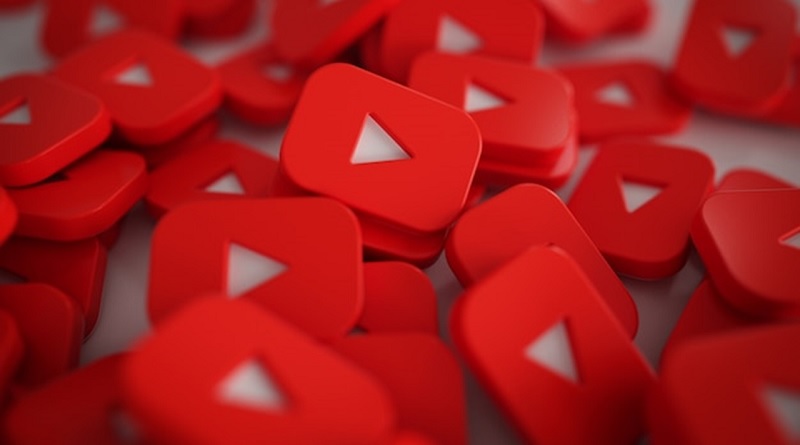Shirofune Enhances Shopify Integration with Google Analytics 4’s Data-Driven Attribution Model
11 Ways To Use Video To Market Your Product Or Service

Video marketing means using videos for promoting and telling people about your product or service. It helps increase engagement on your digital and social channels, educates your audience, and allows you to reach them with a new medium.
Benefits of Using Video for Promotion
We learn best by seeing and interacting with the world around us. While a good story will draw us in and connect with us more meaningfully, video better engages our senses and helps us make sense of information. It provides context, and the retention rate for video is 95%. Whether the purpose is to educate, entertain, or invoke a specific emotion, video content can do it more effectively than any other medium.
Would you respond more favorably to someone asking you to read something or being invited to view a video?
Using video to promote your brand also:
- Supports audience growth
- Increases revenue
- Boosts other marketing content
- Improves online visibility
- Builds trust
- Expands your professional network
Video content creation is also more accessible to small business owners. Rather than hiring a studio and all that comes with it, virtually anyone with a smartphone, an imagination, and some editing software can produce a high-quality video. Now that you understand more about the potential and benefits of video promotion, we’ll show you some creative – and highly effective – ways that you can use video content to increase brand awareness, engagement, and conversions.
11 Unbeatable Video Marketing Strategies
1. Plan Your Video Content Strategy
You can’t plan for a video to go viral. If that were possible, all of us would be social media all-stars. However, you should create an effective marketing strategy to ensure that your campaign bears fruit. This should be your first step.
Things you need to determine before creating any video are your:
- Budget
- Marketing goals
- Audience
- Platforms
- Content
Each of these components supports your overall marketing plan, and decisions for one element affect the others.
2. Create a Product Demonstration Video
This one has been utilised by me countless times, and not just for branding. Too many things come supplied with confusing or overly complicated instructions, if any at all. Would you prefer to watch a video of someone assembling office furniture or attempt to do so using the manufacturer’s instructions? Demonstrations of your product give context, make it clear how it is utilised, and alter buyers’ perceptions of your company. They may even be able to convince your audience to appreciate it if you’re artistic. Take a look at this video for some creative binder clip uses. Your video demo could give a general overview of the product, highlight certain features, stress product safety, or just show how it is made or utilised.
3. Post Customer Testimonials
Which is more impactful, some text from unseen customers stating how much they love your brand or a video of real people who are willing to say it on camera? Testimonials can be in the form of a customer interview, self-created and submitted by customers, or created using a combination of images, texts, and graphics.
Use them on:
- Websites
- Landing pages
You can also convert them into case studies or pin them to the top of social media feeds. Make sure to choose the right platforms for your audience and follow user guidelines for length and video quality. For example, B2-B marketers will get a better response from videos on B2-Btforms like LinkedIn, while B2C marketers will get more traction on Facebook or Instagram.
4. Leverage the Power of Social Proof
There are several kinds of social proof, but the most powerful by far is that which comes from real customers.
Why?
Because people will believe a friend’s recommendation or customer review more often than an influencer or a paid endorsement from a celebrity. They know that a customer is more likely, to tell the truth about their experience with your brand than someone who benefits financially from saying how great you are. So, what is user-generated content (UGC), and how can you deploy it strategically in video form to boost brand awareness and trust. Simply put, it’s content that’s created by customers to promote a product or demonstrate how they engage with your brand. Usually, it’s in the form of social media shares, likes, tweets, and other methods of peer-to-peer engagement.
You’ll transform existing customers into brand ambassadors when it’s deployed visually as social proof. You needn’t be a professional content creator to implement video marketing into your content strategy. User-generated content provides you with social proof in the most cost-effective way possible. To use this idea, share existing video posts from customers or simply ask customers to submit a video of how they use your product(s). Get your whole audience involved by creating a contest where they can vote on the best UGC video submission. The key to success with this strategy is authenticity.
5. Optimize Your Thumbnail and Text
We’re rarely tempted to view something unless our curiosity is piqued. What makes you want to click on a video? Is it a tantalizing teaser or an intriguing still that makes you want to learn more? A compelling headline? Some combination of both? To invite interaction, That features smiling faces. Try to locate a frame where people in the video also appear to be making eye contact with the viewer. This creates a personal connection and instills feelings of happiness or ease. Title and caption it with compelling, keyword-optimized language that’s clear, concise, and compelling without being clickbaity or hyperbolic (pro tip: use the Grammarly Chclickbaityion or even Hemingway App to highlight complicated or fancy words that can be replaced with simpler, clearer synonyms). Your audience should be able to tell what the video is about and want to learn more in a few of the right words as possible.
Good title construction includes:
- Judicial use of caps, brackets, bold text, italics, and punctuation; don’t overdo it.
- One relevant keyword or phrase that’s high-value/low competition, preferably at the beginning of the title.
- One power or action word; make sure that it’s relevant to your content and audience pain points.
Make sure that your optimization takes SEO into account. Search engines will be able to make more sense of your content if you use SEO best practices and insightful keyword research to create headlines, captions, and blurbs. Use alt-tags to double-dip SEO and appropriate hashtags to reach your target audience. Since 77% of consumers view video content on mobile devices, make sure that all of the video and related text are optimized for mobile screens. This will also improve your UX score on search engine rankings.
6. Go Live
How do you build excitement and create an event when you’re marketing remotely? Go live with a video on social media. Nearly all social media and video-sharing platforms now offer an option to post live videos. This is a great solution instead of a real-world grand opening or event when sharing instead of, and launching a new product line or service.
7. Pin Video to the Top of Your Feed
Whether the platform is Twitter, Facebook, YouTube, or another marketing and engagement platform, pinned video is more likely to be seen than video viewers must scroll down to find. This places it in a priority position that even scrollers will see first. It’s also one of the only cases where autoplay will be a bonus rather than a nuisance. If someone is scrolling down a feed, video in action is more likely to make them stop and take a look.
8. Combine Video With Email Marketing
What could be better than pairing two of the most cost-effective marketing strategies with the highest ROI? According to research conducted by Animoto, emails containing the word “Video” improves open rates by 19% and click-throughs by 65%. As you can see, email and video content were made for each other. To use this tip without people unsubscribing, optimize for email. Short clips or a thumbnail with an image don’t hurt message load times and increase click-through rates by more than 300% over a simple link or plain image. This will have the bonus of increasing traffic to the online platform that houses the full video. You can also customize the content to nurture audience segments and lead them at various points in their journey.
9. Make the CTA and Share Options Clear
Every portion of your marketing campaign should include a clear call to action with directives at the end of it. Audiences want to know what they should do with the information you provide. You should also encourage sharing by enabling the option and asking your audience to share after watching the video. If your video platform allows you to add a share button within the video content, that’s even better. The fewer steps a viewer has to take to promote your brand, the more likely they are to do it.
10. Don’t Forget About the Real World
Most of the marketing is done online these days, but we can’t forget that our customers exist in the real world. Video content can add value to the customer experience of brick-and-mortar companies by placing it on your website in the form of tutorials, product demos, or user testimonials. Video can energize the audience much better when appearing at live events like conventions, trade shows, and seminars than a brochure or long speech. Even placing a video in your store window will attract interest and lead more people into your shop. Own an eatery? Consider how many more mouths will water with a video of something juicy on the grill, chefs preparing a fresh salad, or chocolate drizzling over a scrumptious dessert.
11. Last, but not Least: Test and Analyze
Not all video strategies work as well as you hope. Test different platforms, thumbnails, and titles to see which are most effective for generating interest, clicks, and shares.
Testing should continue for long enough to get an accurate measure of effectiveness and reach, say a week or so. Learn to read and analyze your metrics so you can get a read on those that matter most for video content:
- Views
- Favoriting, likes, and shares
- Play rate
- Watch time
- Clicks and click-through rates
- Conversions
Conclusion
Video marketing will help enhance all of the critical indicators that businesses rely on for decision-making and growth, whether you’re starting a startup or running an established brand. To help you develop a marketing strategy that works, we want to give you actionable best practices. The rest is up to your creativity and that of your team.




